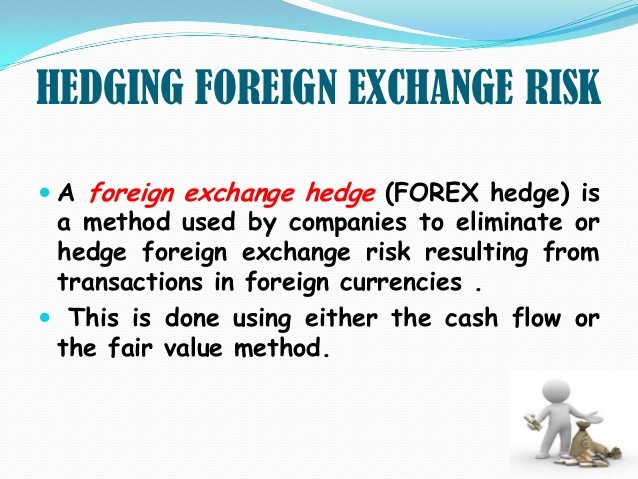Hedging Against FX Risk
Post on: 14 Август, 2015 No Comment

What to Hedge Now
Expanding your company’s borders to offer products to countries around the world can be a very lucrative endeavor. However as much as it is lucrative, it is also cumbersome. Each country has its own rules and regulations for doing business and most countries around the world have different currencies. For small import and export companies, foreign exchange volatility is one of the most difficult and frustrating aspect of doing business internationally. It fluctuates constantly and can either increase profits or result in losses. Foreign exchange risk is difficult to control because unless you are a large import and export company, to hedge the currency risk would require paying spreads and fees that would probably end up offsetting most of the potential benefits from hedging. However even large companies can get so focused on their regular business activity that they forget to hedge their currency exposure. Take BMW, one of the world’s largest car manufacturers for example. In 2003, the Euro rallied 20 percent from a low of 1.04 to a high of 1.25 against the US dollar. The company did very well and revenues increased 4.2 percent, however, according to their annual report, the weakness of the US dollar against other currencies caused their total year’s profit including the effects of currency to turn into losses, their revenue for 2003 was down by 2.1 percent. A company as large as BMW turned profits into losses just because they did not hedge currency risk properly, which makes it even more important for small companies, where every dollar that is earned or lost is even more important to hedge against currency risk.
Calculating FX Exposure
As a financial manager, before you even begin hedging, you need to figure out how much of your exposure is at risk. This includes not only the amount of foreign payments that need to be made or are due to be paid to you but also any payrolls or operational costs for foreign offices. Once you have that amount calculated, the next step is to figure out how to hedge. Many companies will hedge using forward contracts, but a more economical way to hedge may be through spot. Instead of buying a forward contract based on where the EUR/USD may be in the future, spot offers a more real-time hedge of the actual underlying (or the EUR/USD itself). The spreads on spot trading have narrowed significantly over the past few years and can be as little as 2/100ths of a basis point.
How does it Work?
So, for example, in the case of BMW, they could have went long the EUR/USD at 1.04 by the amount of exposure they expect to have keep changing the portfolio mix throughout the year for minimal cost and as a result, would have hedged the bulk of their exposure. But it gets even better. The spot market is not a cash-on-cash market but is instead a margin market. Therefore, to hedge a 100,000 exposure, a company does not need to put up $100,000 in cash. Instead, margin amounts can be as little as $1000. For companies trading spot for hedging purposes, $1000 to hedge $100,000 is not necessarily advisable. The margin should probably be higher, such as 10,000 for every $100,000 capital, but the important thing to know is that it is customizable based upon how much cash the company may have at the time. In addition, in the BMW example, the company would have not only hedged but also earned interest income. Europe and the US had a 25 basis point interest rate differential for approximately half of the year. On ten to one leverage (which is 10,000 margin for 100,000 notional), 25 basis points would be 2.5 percent in additional revenue for the course of the year. Halve that and its 1.25 percent in additional income that would have been generated for BMW at no additional effort.
Knowing When to Hedge
The key is to know when to hedge. If a currency is at a multi-decade low, it is probably not the best time to hedge further losses, but it may probably be a good time to hedge upside risk. Take the EUR/USD example below. The EUR/USD hit an extreme low in 2000. Therefore, 2001 and 2002 would be good times to hedge payments that a US based company would need to make in Euros, because if the Euro appreciates, then it takes more dollars to buy one 1 Euro. For example, if a US company in July of 2001 promised to pay EUR 1,000,000 in July 2003, with the Euro trading at 0.85 against the US dollar, they may have set aside $850,000 for the transaction. However, 2 years later, the Euro appreciated to 1.15 against the US dollar. The same EUR1Mln payment is now equivalent to $1,150,000. For no reason other than foreign exchange fluctuations, the US company now has to shell out an additional $300,000.
Alternatively July 2001 might not be a good time to hedge payments that you will receive that are denominated in Euros. The same may be true in 2003 as the Euro continues to climb. However, in 2004 when we breach the previous high set in 1999 in the Euro, hedgers in 2001-2003 may consider closing the hedge. With the Euro near its all-time highs, the smarter trade for a US company may be to hedge payments that they would receive in Euros rather than payments that they would need to make in Euros.
What to Hedge in Q2 2006?
As we step into the second quarter of 2006, the following currencies are at extreme points, which means that the present levels may offer good areas for corporate finance managers or owners of import and export businesses to begin to consider hedging.














